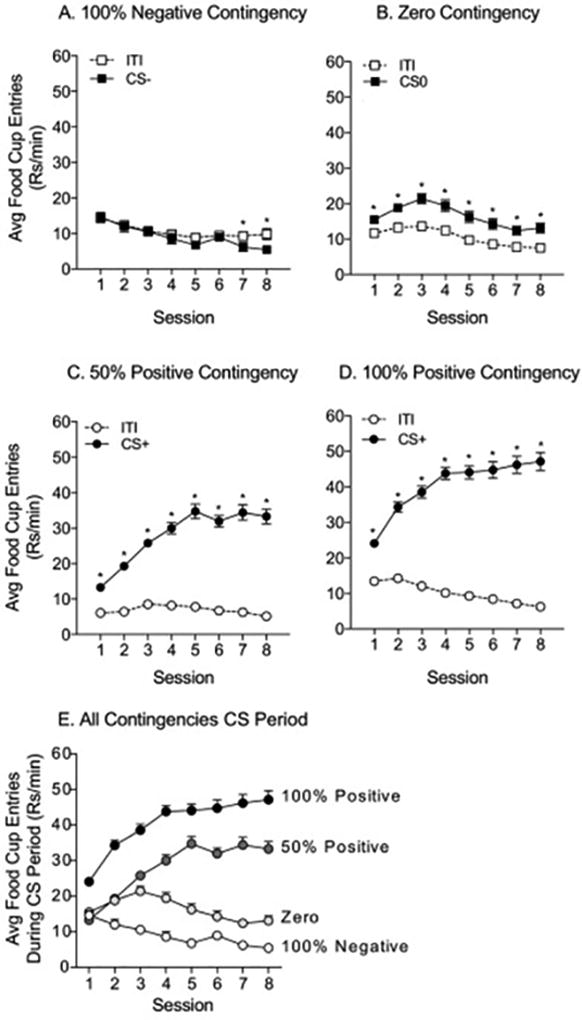Figure 1.

Pavlovian Conditioning, Experiment 1: Average food cup entries during the ITI and CS presentations across conditioning sessions are shown for each contingency group (±SEM). A) 100% Negative Contingency: pellets given during ITI, but never during CS presentations (CS−). By the end of conditioning, entrances into the food cup were greater during the ITI than CS period. B) Zero Contingency: pellets given with equal probability during the ITI and the CS period (CS0). Food cup entries were higher during the CS0 throughout conditioning. C) 50% Positive Contingency: pellets given on 50% of the CS presentations (CS+) and never during the ITI. The rate of entries during the CS increased across sessions. D) 100% Positive Contingency: pellets given with every CS presentation (CS+) and never during the ITI. The rate of entries during the CS increased across sessions, while entries during the ITI decreased. E) Average food cup entries during the CS across conditioning sessions for each contingency group (±SEM). The rate of responding systematically increases as the predictive validity of the CS increases. * = post-hoc comparisons, ITI vs. CS period, p<0.05.
